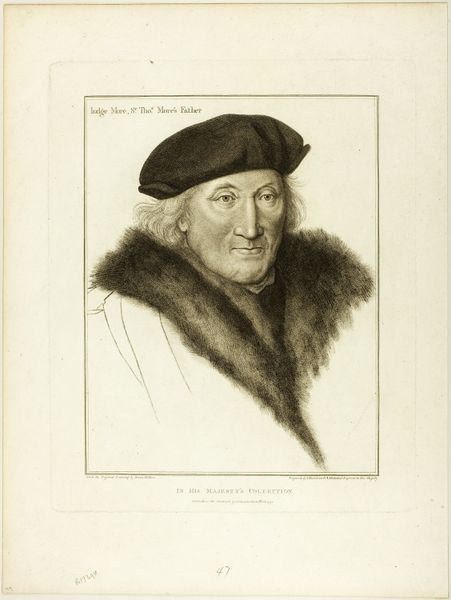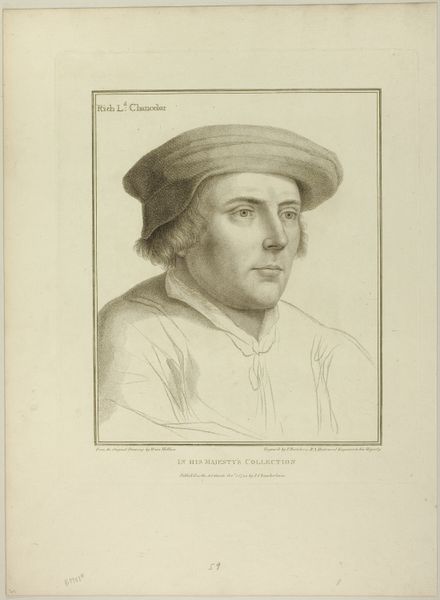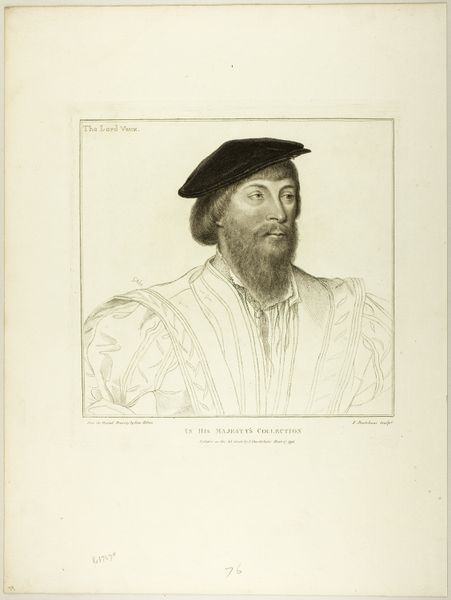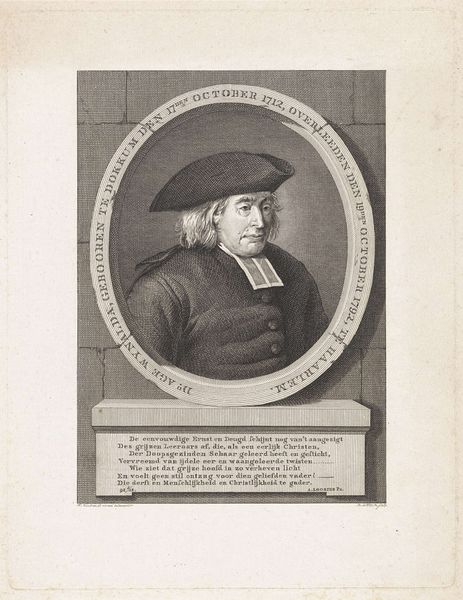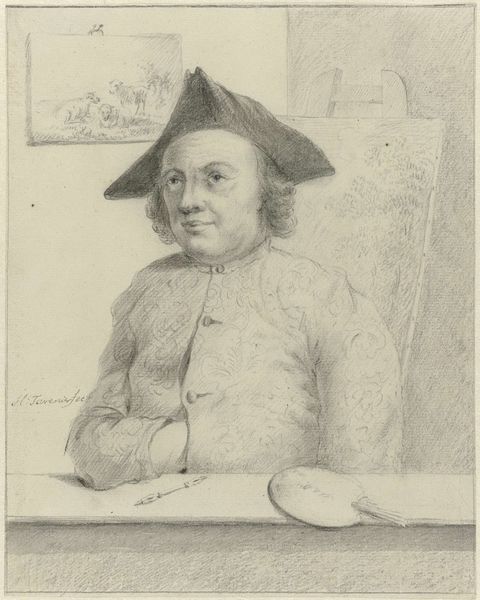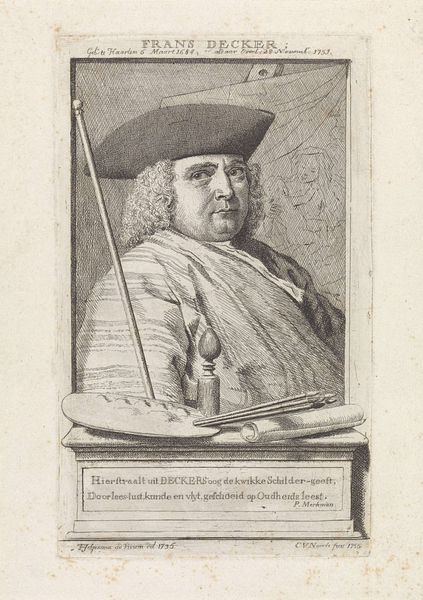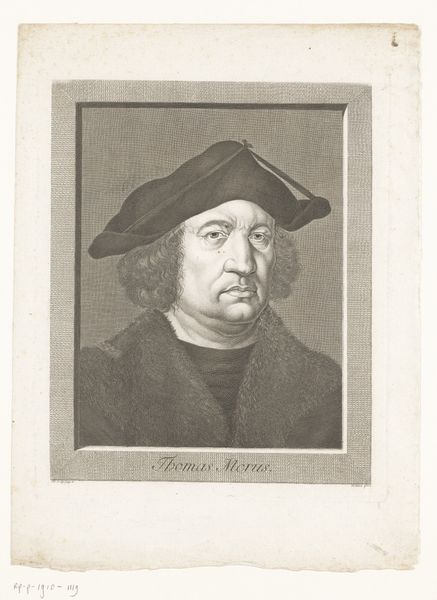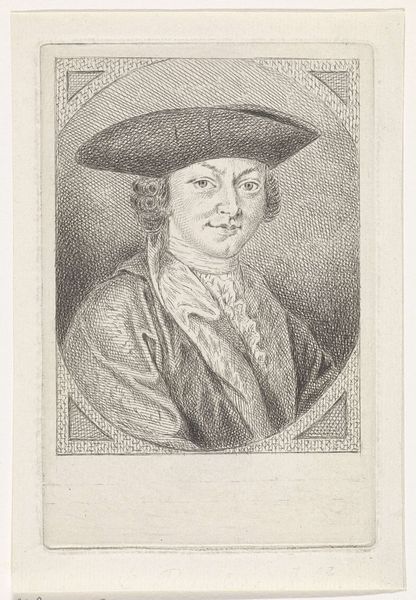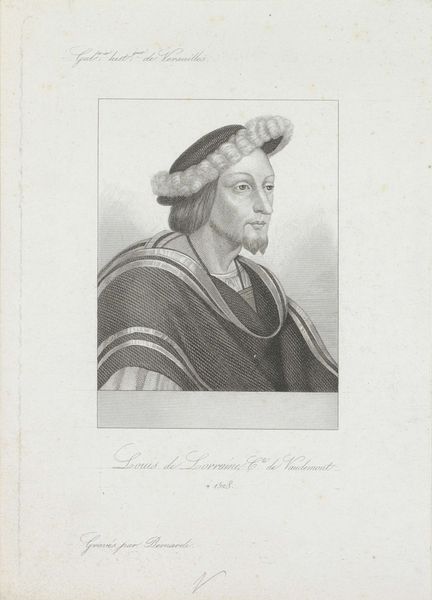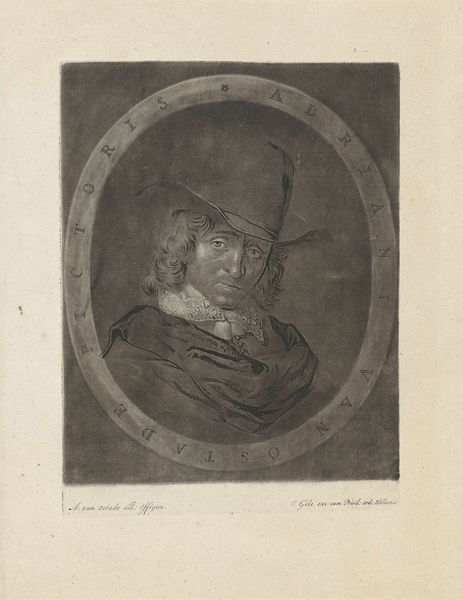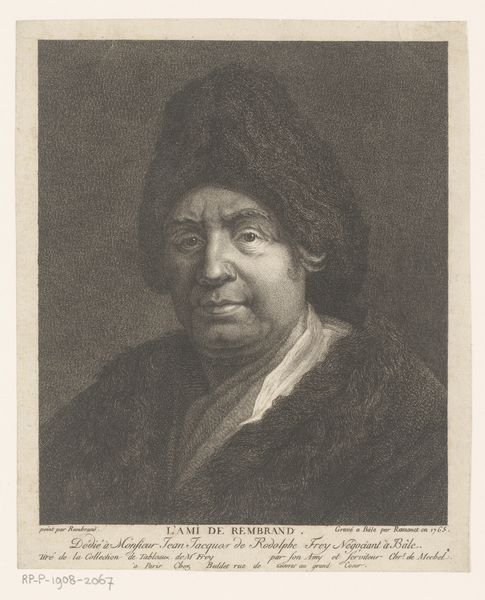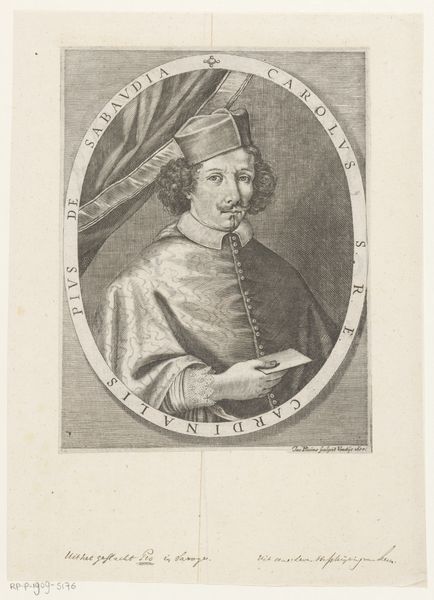
drawing, print, paper, graphite, engraving
#
portrait
#
pencil drawn
#
drawing
#
facial expression drawing
# print
#
pencil sketch
#
caricature
#
paper
#
portrait reference
#
pencil drawing
#
graphite
#
portrait drawing
#
pencil work
#
northern-renaissance
#
italy
#
engraving
#
portrait art
#
fine art portrait
Dimensions: 383 × 293 mm (image); 453 × 358 mm (plate); 540 × 412 mm (sheet)
Copyright: Public Domain
Curator: Francesco Bartolozzi, working around 1792, captured "Sir Henry Guildeford" in a graphite engraving, now residing here at The Art Institute of Chicago. Editor: Immediately I’m struck by its intimacy. It's a whisper of a portrait, the lines so delicate it feels like a fleeting thought given form. Almost like a ghost captured in paper. Curator: It's fascinating to consider the context. Bartolozzi was instrumental in popularizing the stipple engraving technique in England, becoming engraver to the King. This print then, takes on a public dimension. Editor: It does feel very…official, somehow. That careful inscription at the bottom: "In His Majesty's Collection." It's like this Guildeford fella isn’t just some bloke, he’s been vetted and approved for royal consumption! The pencil sketches remind me, a bit of, caricature portraits I saw in Rome. Curator: Well, the original drawing for this engraving was done by Hans Holbein. Bartolozzi reinterpreted that work for wider circulation. That makes it part of a bigger discussion around access to imagery and power. Royal image-making was essential to establish and reaffirm hierarchy in a moment of considerable European unrest. Editor: See, I look at that half-finished cloak, all those tentative lines, and I think, “This is a man in progress." Like the portrait, I guess, a rendering with possibilities of how we consider what an upstanding English figure should even embody. Does he look melancholy to you? Or is he determined to do the right thing. It's all there isn't it! I love his face. Curator: That sense of potential resonates with the Northern Renaissance ethos. Holbein, and subsequently Bartolozzi were tasked with conveying status, the sitter's participation within a sophisticated political framework and the circulation of visual representation of power. The unfinished sections of this print do highlight how the circulation of images were not as clearly defined then as now, especially for "high" figures. Editor: I like how those two perspectives jostle here: The weight of history, and this…unfinished potential. He's got weight on his shoulders, he's probably committed questionable choices. But he doesn't look corrupt, merely...human. It makes me feel quite curious, if not sympathetic to this figure! Curator: Indeed. The piece shows us not only what was considered politically necessary during a specific historical era but, it gives us an insight into the figure's evolving characterization and the nature of authority itself.
Comments
No comments
Be the first to comment and join the conversation on the ultimate creative platform.
